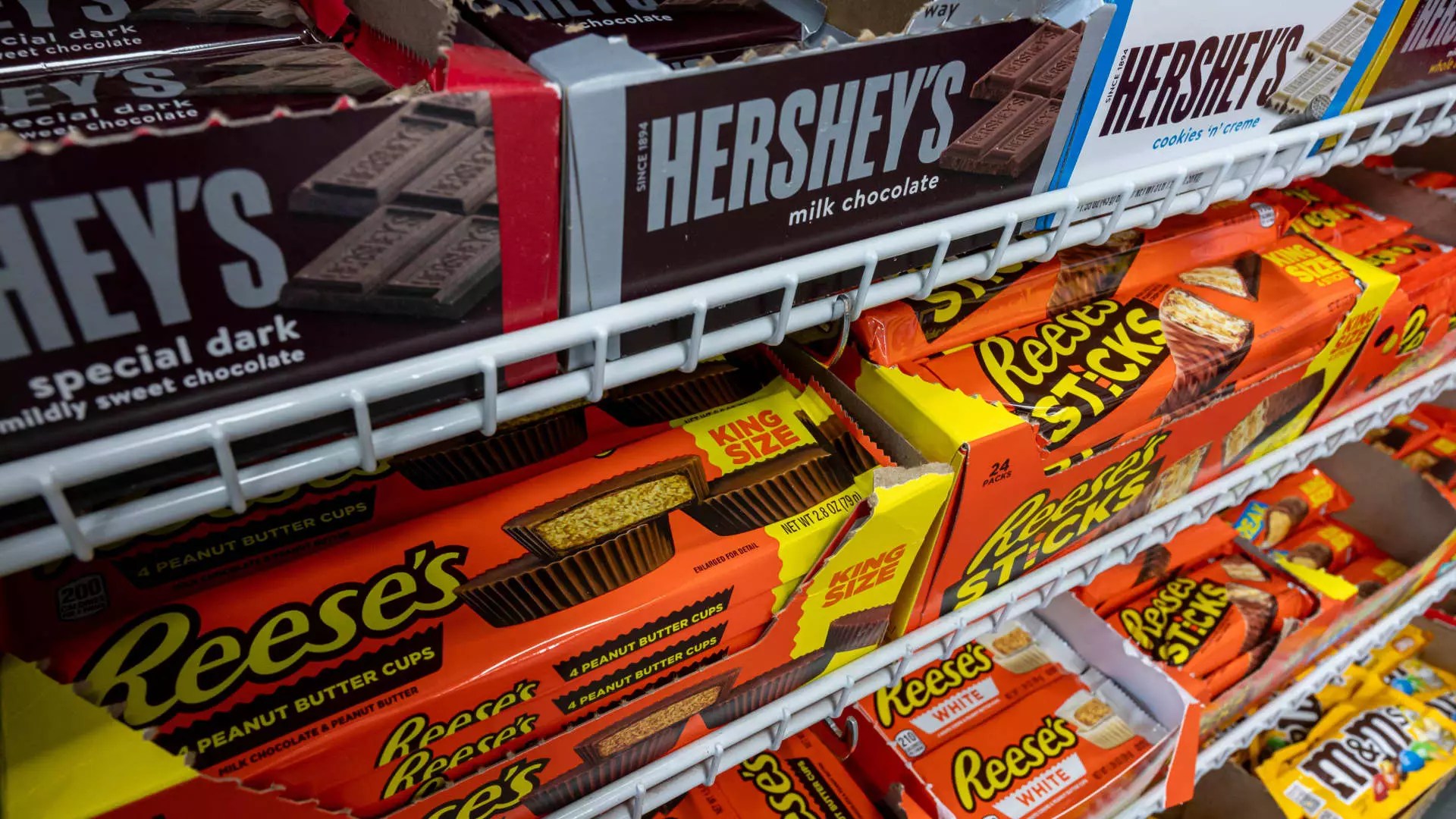In the unpredictable landscape of financial markets, the midday swings reveal more than just fleeting investor sentiment—they expose underlying nerves about economic stability and policy directions. The recent volatility serves as a stark reminder that despite headline gains, underlying currents threaten to destabilize the fragile optimism that has buoyed markets thus far. Stocks like Hershey and Royal Gold exemplify this tension: Hershey’s shares succumb to shifting executive leadership, while Royal Gold’s decline underscores the risk surrounding strategic acquisitions in a turbulent environment.
Hershey’s stock tumbled over 3%, a clear reflection of investor unease following the announcement that Wendy’s CEO Kirk Tanner will succeed Michele Buck as CEO. Such leadership changes, especially in iconic consumer brands, are often met with skepticism in uncertain economic climates. Investors question whether new leadership will maintain the company’s growth trajectory or disrupt the stability they’ve come to expect. Meanwhile, Hershey’s retreat could be emblematic of a broader disquiet about consumer discretionary sectors amid signs of economic slowing.
Royal Gold’s sudden 5% decline, driven by its $3.7 billion acquisition of Sandstorm Gold and Horizon Copper, underscores the risk newcomers in strategic M&A pose amid a market that remains volatile. Large-scale deals in the precious metals and copper sectors appear increasingly vulnerable to market headwinds, as investors grow cautious of overleveraging and uncertain commodity prices. It creates a narrative where strategic expansion is perceived as a gamble, possibly leading to diminished returns in a climate of economic ambiguity.
Regulatory and Policy Headwinds: Red Flags for Investors
Not all market movements are driven solely by company-specific news; regulatory policies continue to cast long shadows over investment prospects. The sharp decline of Fair Isaac Corp.’s shares—nearly 12%—following the Federal Housing Finance Agency’s move to allow competitors’ scoring models demonstrates how regulatory shifts can send ripples through entire industries. The industry-standard FICO scores face renewed competition, which could undermine the company’s dominant position and erode profits in the long run.
Similarly, the solar sector’s decline after President Trump’s executive order to curb green energy subsidies indicates that government policy remains a significant threat to sectors that have largely thrived on favorable regulation. The fall of Sunrun and Enphase reveals a sobering reality: green energy investments, touted as future-proof, are still heavily reliant on political goodwill. As policies flip-flop, investor confidence wanes, and the green energy renaissance appears less resilient than previously imagined.
Sector Divergence: A Market in Fragmentation
While some sectors face headwinds, others continue to demonstrate resilience—at least temporarily. Moderna, with an 11% surge, exemplifies how innovation and vaccine development remain pivotal. Its rise, despite a lack of a clear catalyst, hints at a broader investor confidence in biotech and healthcare—sectors less exposed to macroeconomic volatility. This divergence underscores a fundamental truth: markets are fragmenting, with sectors reacting differently to external pressures.
Conversely, the financial sector faces headwinds, with JPMorgan Chase, Goldman Sachs, and Bank of America all experiencing downgrades and declines. These movements suggest that even seemingly stable institutions are not immune to the shifting landscape, especially as credit risks and economic slowdown fears intensify. The downgrades precede earnings reports but serve as a warning that macroeconomic factors such as rising interest rates and potential recessionary signals are beginning to weigh heavily on banking stocks.
Artificial Intelligence and Tech: Divergent Fortunes Amid Uncertainty
The tech sector reveals another layer of complexity. Its spotlight on artificial intelligence reflects both optimism and caution. Vertiv Holdings’ modest gains after an upgrade signal that infrastructure investments for AI remain promising. Yet, the fate of companies like Datadog illustrates the fragility of confidence: a 4% decline after a downgrade signals that the AI arms race might not be as assured as it seems, especially considering vulnerabilities, like potential revenue loss from competitors like OpenAI.
The broader tech market’s current turbulence signifies a cautious stance from investors. While AI is heralded as the future, the risks of overinvestment, regulatory hurdles, and geopolitical tensions threaten to derail momentum. In the end, the digital innovation bubble remains fragile, with market skeptics questioning whether the sector’s recent gains are justified or driven by speculative fever.
In aggregate, these market dynamics paint a picture of a tempest brewing beneath the surface of apparent stability. The recent sector swings and policy disruptions reveal a market that’s less confident and more skeptical about future growth prospects. Investors are increasingly aware that the era of unchecked optimism is ending, replaced by a more cautious, even jittery, approach. The days ahead will test whether corporate resilience can withstand these mounting headwinds, or if the current volatility merely signals the beginning of a more profound correction.


Leave a Reply